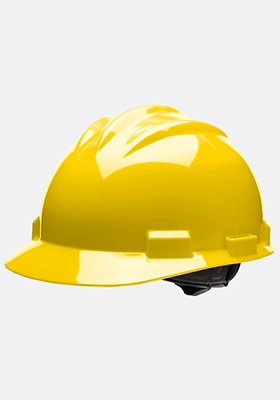Safety Helmets: Intro
In the United Arab Emirates (UAE), safety helmets play a pivotal role in ensuring the protection and well-being of workers across various industries. Safety helmets UAE are not just mandatory gear but are also a critical element in maintaining a safe working environment, preventing head injuries, and complying with stringent regulations set by local authorities.
The UAE places significant emphasis on occupational safety and health standards to safeguard workers from potential hazards in construction sites, industrial settings, and other high-risk workplaces. Safety helmets, commonly referred to as hard hats, are essential personal protective equipment (PPE) designed to mitigate the impact of falling objects, electrical hazards, and other potential dangers that could lead to head injuries.
Safety & Government
Regulatory bodies such as the Ministry of Human Resources and Emiratisation (MOHRE) and the Abu Dhabi Occupational Safety and Health Center (OSHAD) have established strict guidelines regarding the use of safety helmets. These regulations mandate that workers, contractors, and visitors in specific industries or work environments must wear helmets meeting certain safety standards.
The standardization and certification of safety helmets are crucial in ensuring their effectiveness. Helmets used in the UAE need to comply with international safety standards, such as those set by the Occupational Safety and Health Administration (OSHA), the American National Standards Institute (ANSI), or the European standard EN 397, depending on the industry and specific requirements.
Construction sites, in particular, enforce strict adherence to helmet-wearing policies. Employers are responsible for providing suitable and properly fitting helmets to their workers. These helmets must be regularly inspected for any signs of damage, wear, or expiration, ensuring they offer adequate protection.
More Details on Safety Helmets
Moreover, the color-coding of helmets often signifies the role or position of individuals on a worksite. For instance, supervisors or engineers might wear helmets of a different color than general laborers, allowing for easy identification and coordination in a busy workplace.
The implementation of safety helmet regulations is not limited to construction but extends to various sectors where head protection is paramount, including oil and gas, manufacturing, and transportation industries.
Failure to comply with helmet regulations can result in penalties, fines, or even suspension of work. Employers and contractors can be held liable for any workplace accidents or injuries caused due to non-compliance with safety protocols, further emphasizing the importance of strict adherence to these regulations.
Technological Advancements and Innovations:
In recent years, advancements in technology have led to the development of more advanced safety helmets. These innovations include features such as integrated communication systems, built-in sensors for monitoring workers’ health and safety, enhanced ventilation systems for comfort, and materials that offer improved impact resistance while being lightweight.
The incorporation of augmented reality (AR) or heads-up display (HUD) technology within helmets is also being explored in some industries. Such advancements not only bolster safety but also contribute to increased efficiency and productivity in the workplace.
Training and Awareness Programs:
Beyond just mandating the use of safety helmets, the UAE emphasizes the importance of training programs to educate workers about the significance of wearing helmets correctly. Employers often conduct regular safety training sessions to ensure that employees understand how to properly wear, adjust, and maintain their helmets for maximum protection.
These programs also cover information about the different types of helmets available, their specific applications, and the importance of replacing helmets that have undergone significant wear or damage.
Public Awareness and Campaigns:
Government entities and non-profit organizations in the UAE regularly launch awareness campaigns highlighting the importance of workplace safety, including the necessity of safety helmets. These campaigns aim to reach a broader audience, including workers, employers, and the general public, stressing the significance of adhering to safety regulations to prevent accidents and injuries.
Future Trends and Sustainability:
As sustainability becomes a more significant focus globally, there’s a growing interest in developing safety helmets using eco-friendly materials and sustainable manufacturing practices. Some companies are exploring the use of recyclable materials in helmet production to reduce environmental impact.
Additionally, the integration of smart technology in helmets, such as solar-powered safety lights or renewable energy sources for powering built-in sensors, is an area being explored to enhance both safety and environmental consciousness in the workplace.
In conclusion
Safety helmets UAE are an integral part of ensuring workplace safety in the UAE. Stringent regulations, proper certification, regular inspection, and enforcement of standards by regulatory bodies are crucial in upholding the safety and well-being of workers across different industries. Employers must prioritize providing high-quality, certified helmets and ensuring their proper usage to mitigate the risks associated with potential head injuries in the workplace.




